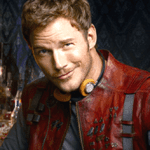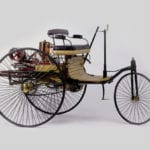 Weird Stuff
Weird Stuff  Weird Stuff
Weird Stuff  Politics
Politics 10 Political Scandals That Sent Crowds Into the Streets
 Weird Stuff
Weird Stuff Ten Bizarre Facts About The Doge Meme
 Our World
Our World 10 Ways Your Christmas Tree Is More Lit Than You Think
 Movies and TV
Movies and TV The 10 Coolest Stars to Set Sail on The Love Boat
 History
History 10 Things You Didn’t Know About the American National Anthem
 Technology
Technology Top 10 Everyday Tech Buzzwords That Hide a Darker Past
 Humans
Humans 10 Everyday Human Behaviors That Are Actually Survival Instincts
 Animals
Animals 10 Animals That Humiliated and Harmed Historical Leaders
 History
History 10 Most Influential Protests in Modern History
 Weird Stuff
Weird Stuff 10 Funny Ways That Researchers Overthink Christmas
 Politics
Politics 10 Political Scandals That Sent Crowds Into the Streets
 Weird Stuff
Weird Stuff Ten Bizarre Facts About The Doge Meme
Who's Behind Listverse?

Jamie Frater
Head Editor
Jamie founded Listverse due to an insatiable desire to share fascinating, obscure, and bizarre facts. He has been a guest speaker on numerous national radio and television stations and is a five time published author.
More About Us Our World
Our World 10 Ways Your Christmas Tree Is More Lit Than You Think
 Movies and TV
Movies and TV The 10 Coolest Stars to Set Sail on The Love Boat
 History
History 10 Things You Didn’t Know About the American National Anthem
 Technology
Technology Top 10 Everyday Tech Buzzwords That Hide a Darker Past
 Humans
Humans 10 Everyday Human Behaviors That Are Actually Survival Instincts
 Animals
Animals 10 Animals That Humiliated and Harmed Historical Leaders
 History
History 10 Most Influential Protests in Modern History
10 Superhero Firsts
Superheroes are everywhere these days as Marvel makes blockbuster after blockbuster. DC is also hoping to break records with Superman v Batman: Dawn of Justice. But who was the first superhero? Who was the first female superhero? The first black superhero? The answers may surprise you.
These fictional characters are not parodies. They have superhuman powers or skills, a costumed identity, and a civilian alter ego. More importantly, they were the first to expand the boundaries of the genre.
10 Spring-Heeled Jack
The First Superhero
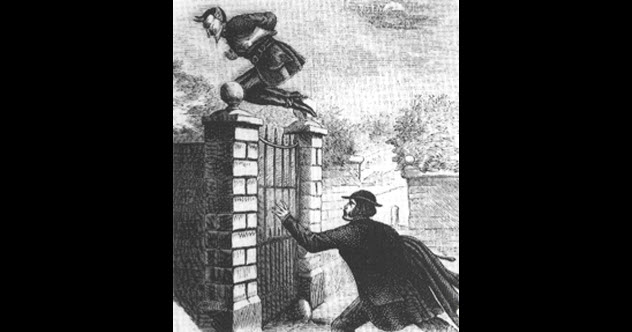
The most obvious choice for first superhero is Superman, who debuted in Action Comics #1 (April 1938). He was certainly the first comic book superhero. Even the word “superhero” is derived from his name.
However, there were several costumed characters in newspaper comic strips who came earlier. Lee Falk’s Phantom, who appeared in February 1936, was a mysterious masked crime fighter with a secret identity. If you go to the pulps, Zorro came even earlier, debuting in the serialized novel The Curse of Capistrano (1919).
But for the first character to fit our definition, you have to return to 19th-century England. Back then, there were reports of a bizarre figure in oilskins (waterproof cloth) with blazing eyes and a horned helmet that concealed his identity.
Spring-Heeled Jack was said to appear from nowhere to accost young women, spit balls of blue fire, and then escape by using superhuman leaps over walls or onto the roofs of houses. The first few fictional treatments made Jack a criminal, but Spring-Heel’d Jack: The Terror of London (1867) portrayed him as a wronged nobleman who used his costume and powers to rob from the rich and give to the poor.
This 40-part serial was published in the inexpensive “penny dreadful” magazines of the day. The serial’s authorship is somewhat in doubt. It was published as the work of “Charleton Lea,” which was a pen name for either George A. Sala or Alfred Burrage.
9 Fantomah
The First Female Superhero
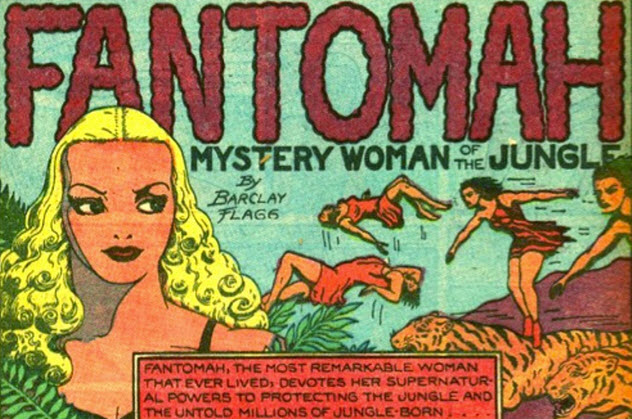
Wonder Woman, who debuted in All Star Comics #8 (December 1941), is the first widely recognized superheroine, but there were several ahead of her. Canadian heroine Nelvana of the Northern Lights first appeared in August 1941, as did Quality Comics’ Miss America and Phantom Lady.
DC heroine Hawkgirl made her debut in July 1941. Comic strip heroine Invisible Scarlet O’Neil first appeared in June 1940, and DC’s unique Red Tornado debuted in June 1939. The original Red Tornado was a brawny housewife named Ma Hunkel, who dressed in red long johns and wore a cooking pot with eyeholes as a helmet.
Although the Red Tornado can be considered the first female costumed superhero, she is a parody character. The first to fit our definition is Fantomah, who appeared in Jungle Comics #2 (February 1940).
Fantomah is the unique creation of writer-artist Fletcher Hanks. Originally an Egyptian princess, she was revived in the 20th century to protect the jungles of Africa. Fantomah normally appeared to be an attractive blonde woman—which must have made her stand out in ancient Egypt—and wore a scanty costume in the tradition of other jungle princess heroines.
When fighting evil, she changed into a huge, blue-skinned, blonde woman with a skull face. In this form, Fantomah had apparently unlimited sorcerous powers to deal out imaginative and grotesque deaths to evildoers who threatened her jungle home.
The series was characterized by Hank’s stylish but clunky art and bizarre plots. But it never gained popularity. Fantomah lost out to her more attractive and conventional rivals. She faded into obscurity, never to be revived.
8 Black Panther
The First Black Superhero
Unlike some of these superhero firsts, the first black superhero is still active in comics today. The Black Panther, who debuted in Fantastic Four #52 (July 1966), was the creation of Stan Lee and Jack Kirby. In his other identity, the Panther is T’Challa, king of the fictional African nation of Wakanda.
An inventive genius and athletic prodigy, T’Challa also benefited from eating a rare heart-shaped herb that gave him the strength, agility, and senses of a jungle cat. He has taken part in many important story lines in Marvel Comics, including his wedding to the African superheroine Storm.
The Panther briefly changed his name to Black Leopard in Fantastic Four #119 (February 1972). Marvel Comics feared that readers might associate the character with the Black Panther Party, which was active at that time. Editor in chief Stan Lee says that the name was quickly changed back to Black Panther when “Black Leopard” proved unpopular with both readers and creators.
The Panther is a part of the Marvel Cinematic Universe and will be played by Chadwick Boseman in Captain America: Civil War (May 2016). Black Panther also has his own feature film coming in 2018.
7 Green Turtle
The First Asian Superhero
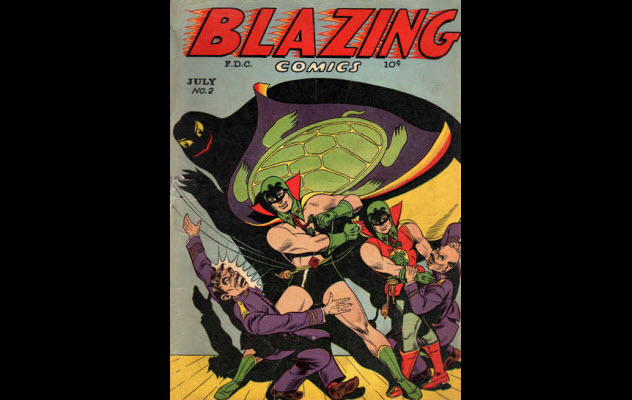
There have been Asian superhero sidekicks dating back to the 1930s. Wing started working with DC’s Crimson Avenger in October 1938, and Kato, the Green Hornet’s assistant, debuted on the radio on January 31, 1936.
Kato gradually became an equal partner to the Hornet. This was largely due to Bruce Lee, who played him in the 1966 Green Hornet television series. However, both Wing and Kato began as broad and unflattering racial stereotypes.
Surprisingly, there was a short-lived Asian superhero with his own title that began in Blazing Comics #1 (June 1941). The Green Turtle was the creation of Chu F. Hing, who wanted to create a Chinese hero.
Purportedly, when the publisher told him that there was no market for a Chinese character, Hing responded by leaving the Turtle’s race and nationality ambiguous. The Turtle’s secret identity was never revealed, nor was his unmasked face ever shown.
With seemingly limitless resources, the Green Turtle was a highly skilled fighter and detective who fought the Japanese in occupied China. He was assisted by a young sidekick called Burma Boy.
Blazing Comics only ran for a short time, and the character was mostly forgotten. In 2014, Gene Luen Yang and Sonny Liew revived the Green Turtle for a six-issue miniseries called The Shadow Hero, which give him the secret identity of American-born Hank Chu. All six issues have been collected in trade paperback format by First Second Books.
6 Super-Chief
The First Native American Superhero
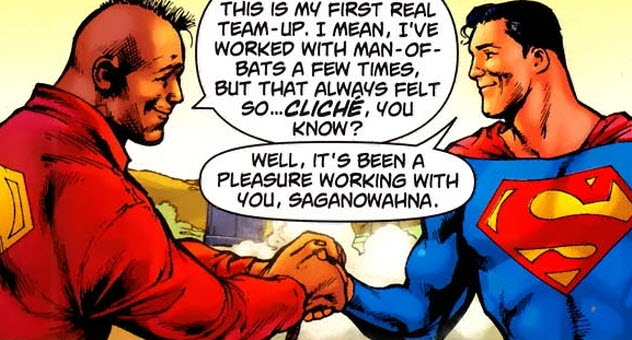
Super-Chief, created for DC Comics by Gardner Fox and Carmine Infantino, first appeared in All-Star Western #117 (March 1961). Saganowahna (“Flying Stag”) was an Iroquois warrior in pre-Columbian North America who prayed to Manitou for help against his rivals.
When Flying Stag saw a meteorite land, he went to investigate and found a stone that gave him the strength of 1,000 bears, the speed of 1,000 deer, and the leaping ability of 1,000 wolves for one hour each day. He kept the “Manitou Stone” and used his new powers to fight for justice.
This superhero bears the same name as a famous train, which is especially ironic considering the impact of the railroads on Native Americans. Super-Chief was also burdened by cultural inaccuracies. He was said to be Iroquois but used Algonquian words like “manitou.”
In addition, “Saganowahna” doesn’t appear to mean anything in any North American language. Author Fox is highly regarded for his intelligence and broad learning, so it’s likely that these mistakes had to do with the lack of research material available on Native Americans in the early 1960s.
Several of Saganowahna’s descendants have also used the Manitou Stone to become new versions of Super-Chief. Two of these were superheroes in the modern world, and one was a villain who fought Superman.
5 Seraph
The First Jewish Superhero
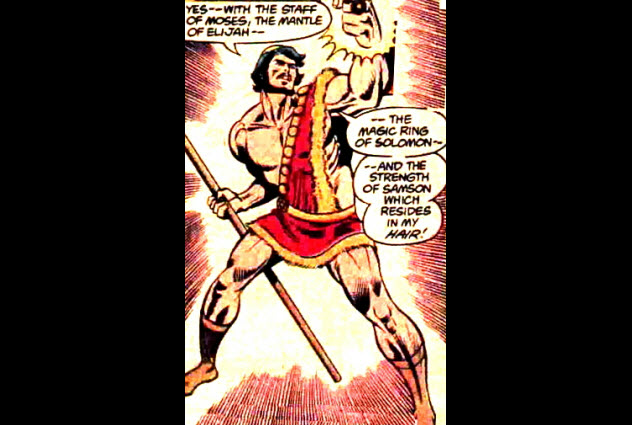
Although many influential creators in the Golden and Silver Ages of comics were Jewish, it’s hard to determine the first Jewish superhero. The first character overtly intended to be Jewish was Funnyman, who used peashooters, joy buzzers, pogo sticks, and other gag items to fight crime.
The character debuted in Funnyman #1 (January 1948) and came from the same team that had created Superman—Joe Siegel and Jerry Shuster. But Funnyman is a parody character, so he doesn’t fit our definition of superhero.
There are a number of other Jewish characters who might qualify: DC’s Sandman from Adventure Comics #40 (July 1939), Colossal Boy from Action Comics #267 (August 1960), the Thing from Fantastic Four #1 (November 1961), the second version of the Two-Gun Kid from Two-Gun Kid #60 (November 1962), Iceman from X-Men #1 (September 1963), Quicksilver and the Scarlet Witch from X-Men #4 (March 1964), Ragman from Ragman #1 (August/September 1976), and so on.
The problem with these characters is that readers weren’t told that they were Jewish until years, sometimes decades, after their creation. Religion was not discussed much in the Golden and Silver Ages of comics, so it’s possible that some of these characters were meant to be Jewish all along.
Stan Lee says that this was the case for the Thing, a character that he created with Jack Kirby. Others, like Ragman, were probably never thought of as Jewish by their creators. Otherwise, they might not have given Ragman an alter ego named Rory Regan.
Although the distinction might go to the Thing or possibly even Sandman, the first unambiguously Jewish superhero is DC’s Seraph. But he’s not just Jewish, he’s super Jewish.
Seraph debuted in Super Friends #7 (October 1977). He is Chaim Levon, an Israeli schoolteacher who was entrusted with magical artifacts that gave him the powers of heroes from the Torah.
The ring of Solomon gave him the power of teleportation. The mantle of Elijah protected him from harm. The staff of Moses could extend to any length, transform into a serpent, part a lake or a sea, or even summon water from a stone. His long hair gave him the strength of Samson.
In one issue, Seraph even appealed to God to temporarily freeze time, a nod to the biblical story of Joshua.
4 Northstar
The First Openly Gay Superhero
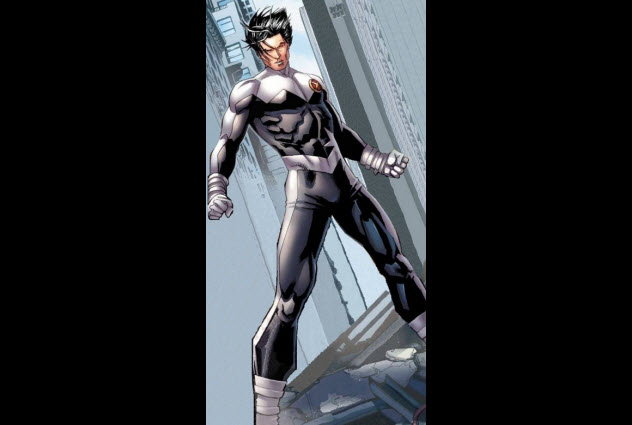
Gay and lesbian superheroes have become fairly common in recent years, but in the late 1970s, the idea was literally banned. Both the Comics Code Authority and Jim Shooter, Marvel Comics’ editor in chief, had forbidden any overt references to homosexuality.
When Northstar was introduced in Uncanny X-Men #120 (April 1979), creators John Byrne and Chris Claremont knew that they wanted him to be gay but were limited to subtly implying it.
His alter ego, skiing champion Jean-Paul Beaubier, ignored the attentions of attractive women, although the writers weren’t allowed to say why. It wasn’t until Alpha Flight #106 (March 1992) that Northstar was finally allowed to utter the words, “I am gay.”
Northstar is a mutant with the powers of flight and superspeed. He has a twin sister, Jeanne-Marie, who has identical powers and the superheroine identity of Aurora. When the twins join hands, they can emit a blinding burst of light.
Northstar is also the first comic character to enter into a same-sex marriage. He wed supporting character Kyle Jinadu, who is not a superhero, in Astonishing X-Men #51 (June 2012). This coincided with the date that same-sex marriage was recognized in New York in the real world.
3 Doctor Mid-Nite
The First Superhero With A Disability
The best-known disabled superhero is unquestionably Marvel’s Daredevil, whose Netflix TV series has raised his profile dramatically. Daredevil is blind, but his other senses have become so sharpened that he functions far better than a sighted person.
There are also heroes with other disabilities. Professor X of the X-Men has paralyzed legs, Jericho of DC’s Teen Titans is mute, Box of Marvel’s Alpha Flight is a multiple amputee, and DC’s Cyborg is one of a large number of superheroes with prosthetic limbs.
However, the first disabled superhero was Doctor Mid-Nite, who dealt with his blindness 40 years before Daredevil. Doctor Mid-Nite first appeared in All-American Comics #25 (April 1941).
Blinded in an accident, Charles McNider was a physician who mysteriously gained the power to see in total darkness. As Doctor Mid-Nite, he exploited this power by creating “blackout bombs” that would blot out all light in a room, making him the only person who could see. Mid-Nite also had a trained owl named Hootie (or Hooty) that assisted him.
While he hasn’t seen much action in recent years, Mid-Nite was a big part of DC’s Golden Age as a member of the Justice Society of America.
2 Madame Fatal
The First Cross-Dressing Superhero
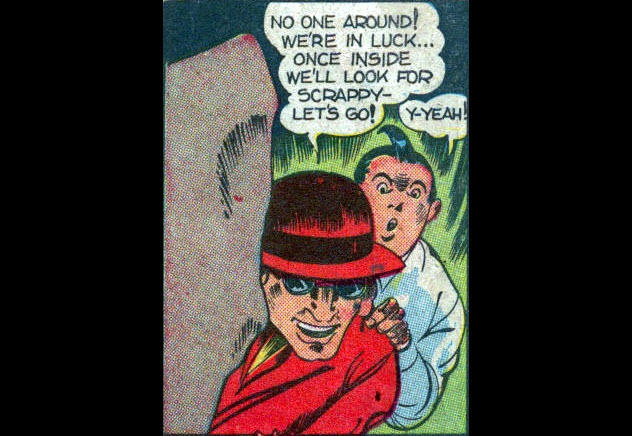
This is an area that comics have yet to explore seriously. The only real examples seem to be from the late 1930s. One is Ma Hunkel, who dressed as a man to fight crime as the Red Tornado. This version of Red Tornado was a parody character, and the cross-dressing in her stories was purely for comic effect, as transvestism almost always was during that period.
But the first cross-dressing superhero came even before Red Tornado. Madame Fatal, “crime’s worst enemy,” debuted in Crack Comics #1 (May 1940) and was created by Art Pinajian.
Fatal was a Batman-type hero, a wealthy and athletic dilettante who disguised himself to fight crime. The difference was that Richard Stanton didn’t dress in tights and a cape. Instead, he put on a dress, makeup, and wig to disguise himself as an elderly woman.
This gave him the ability to blend into crowds. It was also an advantage in fights because his opponents underestimated his strength and agility. To round out his skills, Madame Fatal was also proficient at using his cane as a weapon.
Stanton was a retired actor and female impersonator, which inspired his choice of disguise. He was a widower who lived with his two-year-old daughter until she was kidnapped. Becoming Madame Fatal, Stanton tracked down the kidnapper. But his daughter had been passed to another villain. The series was canceled before the story could be resolved.
The idea of a cross-dressing hero drew ridicule in the 1930s, leading to Madame Fatal’s early cancellation. DC purchased the rights to all characters owned by Quality Comics in 1956. But Madame Fatal has only appeared a few times since and always as the butt of a joke.
This attitude seems inconsistent with the strides that comics have made in portraying gay and lesbian characters, but it is a reminder that there is always another hurdle.
1 The Arabian Knight
The First Muslim Superhero
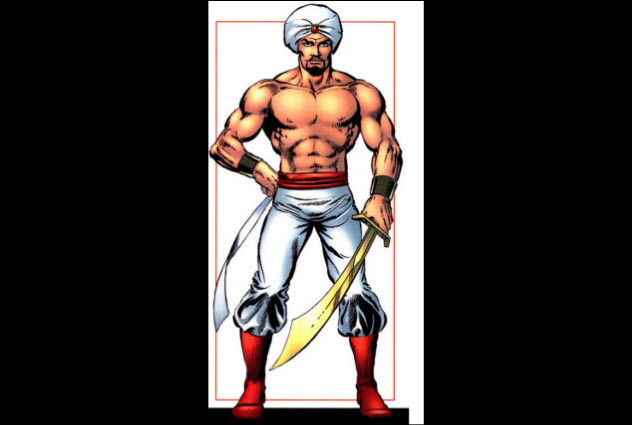
Teenager Kamala Khan (aka Ms. Marvel) is currently getting a lot of publicity as a Pakistani American and a Muslim. While the concept is still daring and certainly deserves all the praise that it gets, Ms. Marvel is not the first Muslim superhero.
She is predated by DC’s Sirocco, Sandstorm, and Simon Baz, who briefly took on the role of Green Lantern. Marvel’s Dust, a member of the X-Men, also came earlier.
But the first Muslim superhero seems to have been Marvel’s Arabian Knight, who made his debut in Incredible Hulk #257 (March 1981). Abdul Qamar was a bedouin chief from either Saudi Arabia or Egypt who was entrusted with the magical weapons of a heroic ancestor.
He was created shortly before Marvel’s Contest of Champions miniseries, which featured new superheroes from across the world. These characters were generally walking stereotypes of their cultures, and the Arabian Knight was no different.
He rode on a flying carpet to fight evil with his magic scimitar. Aside from the occasional “by Allah,” there was no real connection to his faith or culture.
The jump from walking stereotypes to complex characters like Ms. Marvel shows a commitment to write characters and the worlds in which they live as emotionally real. Looking at Ms. Marvel, it’s clear that comics have come a long way.
Matthew Baugh is the author of more than 40 published short stories and three novels: The Vampire Count of Monte Cristo, A Girl and Her C.A.T. (with Win Scott Eckert), and The Avenger: The Sun King. He is a longtime comic book and pop culture nerd as well as an ordained pastor.
